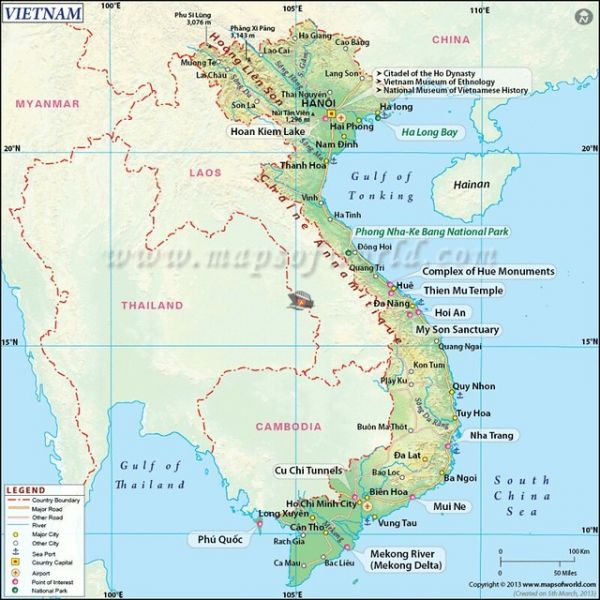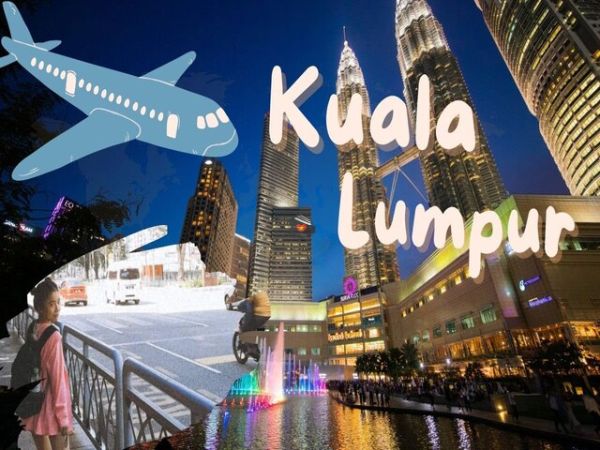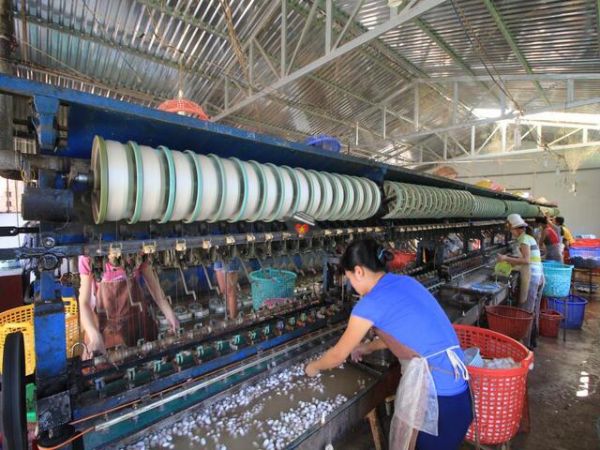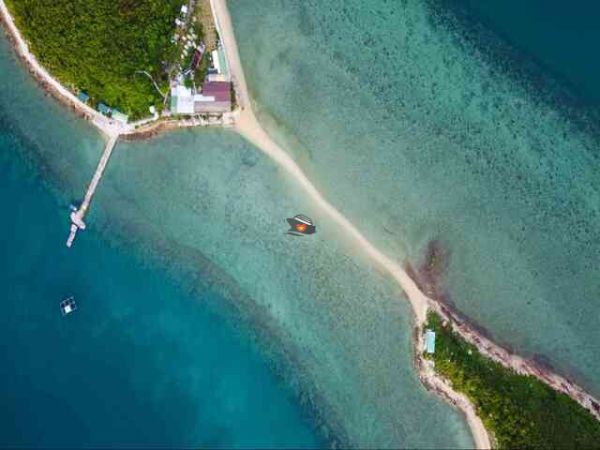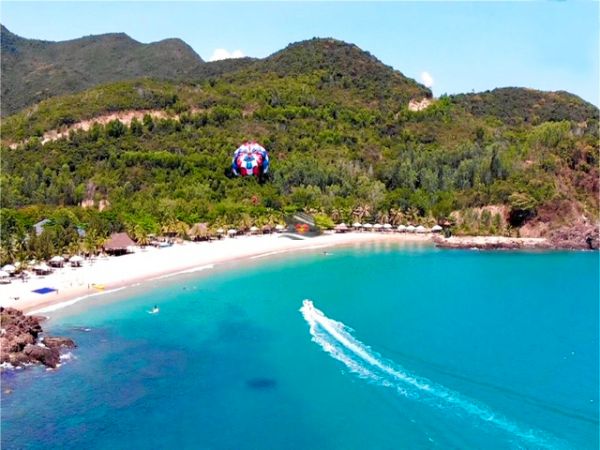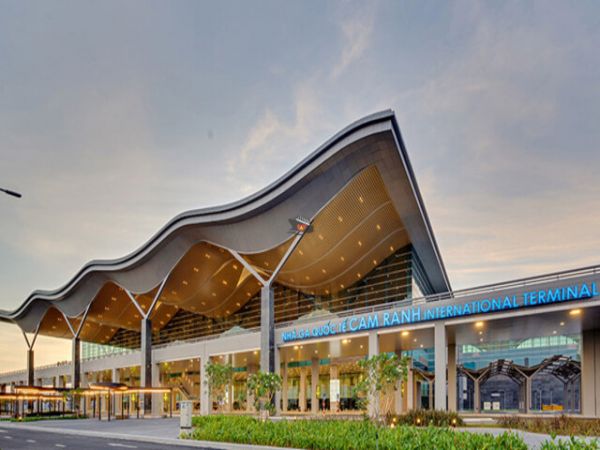MAP OF VIETNAM
Maps Of Vietnam. This is the Vietnam Map, which shows the most popular tourist attractions as well as the ideal times to visit them. This map allows you to simply determine an opportune time to visit destinations in Vietnam.
Vietnam is located in Southeast Asia and is the easternmost nation on the Indochina peninsula. The country's form resembles a S; it has a long coast along the South China Sea, borders China in the north, and neighbors Laos and Cambodia in the southwest. Vietnam shares maritime boundaries with Indonesia, Malaysia, the Philippines, and Thailand. With an area of 331,689 km², it is approximately the size of Finland or slightly larger than the US state of New Mexico.
Vietnam has a population of around 100 million people (in 2023), ranking 13th on the list of the most populated nations.
The spoken language is Vietnamese, and English is gaining popularity as a second language.
The map depicts Vietnam and the neighboring nations, including international borders, region boundaries, the national capital Hanoi, and significant cities.
Vietnam has 5 Municipal Cities and 58 Provinces in 3 Main Regions: The North, Central and South Vietnam.
Municipal Cities in Vietnam: Hanoi Capital, Hai Phong City, Da Nang City, Ho Chi Minh City and Can Tho City.
- Provinces in Northern Vietnam:
North East Vietnam – 9 provinces: Phu Tho, Thai Nguyen, Tuyen Quang, Ha Giang, Cao Bang, Bac Kan, Lang Son, Bac Giang, Quang Ninh
North West Vietnam – 6 provinces: Hoa Binh, Son La, Dien Bien, Lai Chai, Lao Cai, Yen Bai
Red River Delta – 2 municipal Cities (Hai Phong and Hanoi Capital) and 8 Provinces: Vinh Phuc, Bac Ninh, Hung Yen, Hai Duong, Thai Binh, Nam Dinh, Ninh Binh, Ha Nam.
Provinces in Central Vietnam:
North Central Coast – 6 provinces: Thanh Hoa, Nghe An, Ha Tinh, Quang Binh, Quang Tri and Thua Thien Hue.
Central Coast of Vietnam – 1 municipal city (Da Nang) and 7 provinces: Quang Nam, Quang Ngai, Binh Dinh, Phu Yen, Khanh Hoa, Ninh Thuan and Binh Thuan
Central Highlands Vietnam: 5 provinces includes Kon Tum, Gia Lai, Dak Lak, Dak Nong, Lam Dong
Provinces in Southern Vietnam:
South East – 1 municipal city (Ho Chi Minh City) and 5 provinces includes Binh Phuoc, Binh Duong, Dong Nai, Tay Ninh, Ba Ria Vung Tau.
Mekong Delta - 1 municipal city (Can Tho City) and 12 provinces includes Long An, Tien Giang, Ben Tre, Vinh Long, Tra Vinh, Dong Thap, Hau Giang, Soc Trang, An Giang, Kien Giang, Bac Lien, Ca Mau.

The largest ethnic groups are Kinh 85.32%, Tay 1.92%, Thái 1.89%, Mường 1.51%, Hmong 1.45%, Khmer 1.37%, Nùng 1.13%, Dao 0.93%, Hoa 0.78%, with all others accounting for the remaining 3.7% (2019 census).
The majority of Vietnamese embrace traditional religions, including venerating ancestors and praying to deities, especially during holidays like Tết. Folk religions originated from cultural beliefs influenced by Confucianism and Taoism from ancient China, as well as Buddhism (Phat giao). These three beliefs, or tam giao, were eventually supplemented by Christianity (Catholicism, Công giao), which has gained prominence. Vietnam has two indigenous religions: syncretic Caodaism (Dao Cao Dai) and quasi-Buddhist Hoahaoism (Phat giao Hoa Hao).
According to Pew Research Center estimates from 2010, the majority of Vietnamese people (45.3%) practiced folk religions. In total, 16.4% of the population was Buddhist (Mahayana), 8.2% were Christians, and around 30% were unaffiliated with any faith. The Socialist Republic of Vietnam is officially an atheist state, according to the communist government.
According to the Government Committee for Religious Affairs, as of 2018, Buddhists accounted for 14.9% of the total population, Christians 8.5% (Catholics 7.4% and Protestants 1.1%), Hoahao Buddhists 1.5%, and Caodaism adherents 1.2%. Hinduism, Islam, and the Baháʼí Faith account up less than 0.2 percent of the population. Folk religions (worship of ancestors, gods, and goddesses), which are not included in government statistics, have seen a rebirth since the 1980s.
.jpg)
Hotline/ WhatsApp: +847-6666-0606
Email: info@friendlytravel.vn


